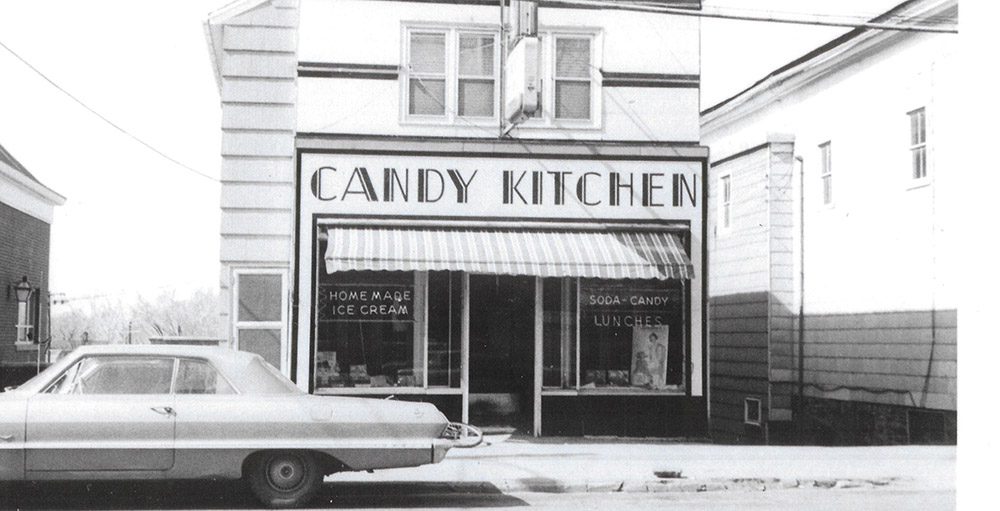The following is the fourth in a seven-part series. We hope you’ll enjoy.
“Don’t Forget Easter Candies! Ours Are Pure & Wholesome.”
Who could resist such a delicious ad headline? When it appeared in the Webster Herald in April 1939, just about every reader knew that the Webster Candy Kitchen at 14 E. Main Street made the best Easter candies in the area, from molded chocolate bunnies to jelly beans at an affordable 15 cents per pound.
A fixture in Webster since 1908, the Candy Kitchen was founded by Charles Papapanu, a native of Greece who came to America to begin a new life. His brother Steven Papapanu preceded him in 1906, when he was about 12 years old, and began running the Webster shop when he returned from serving in World War I.
The approach of each major holiday brought customers in for “raspberry creams, caramels, starlight kisses, butter crunch, orange jelly, maple walnut creams, peanut butter brittle, nougat, raisin clusters…” enveloped in heart-shaped chocolate shells for Valentine’s Day or egg-shaped ones for Easter, according to a 1972 article in the Rochester Democrat & Chronicle. The Webster Candy Kitchen provided a huge chocolate rabbit each year for the annual Kiwanis Easter Egg Hunt, increasing the size to 25 pounds as the years went by.
Not to mention the ice cream, of course—owners added a classic soda fountain in 1940, and prepared hot fudge sundaes that became legendary among its customers. “The ice cream suckers were to die for,” said Mary Pantas, Steven Papapanu’s daughter,
to Alan Morrell of the D&C in 2016.
When Steven decided to step back from management of the store, Mary and her husband, Chris Pantas, bought the Candy Kitchen and ran it until 1973. Chris, who had worked in the family business for years, already knew most Webster residents who frequented the shop by their first names. He particularly enjoyed helping children choose their favorite confections.
“They come in to buy candy to give to their mothers,” he told reporter Jackie Redrupp at the D&C. “I try to help them select the best for their money. Sometimes they’ll set their heart on a $1.25 item, when perhaps they’ve only got 75 cents in their pocket—so we do a deal.”
The family recipes involved many pounds of sugar, quarts of corn syrup, and specialty ingredients like peppermint, spearmint and wintergreen extract, marshmallow fluff, a rainbow of fruit flavorings, finely chopped cherries, raisins, and nuts.
It seemed like such a thriving business could go on forever, but tragedy struck in September 1973. Chris and Mary Pantas were on a vacation to celebrate their 25th wedding anniversary when Mary called home to check in with her family. Her daughter Cindy had to share the bad news with them: A discarded cigarette had ignited a fire that ravaged the building. Their insurance was not enough to cover the damage; they had to close the Candy Kitchen.
“Mary and Chris Pantas converted the basement of their home into a candy-making operation,” Morrell reported. “There, her father continued to make candy, which was sold at the now-gone Utz Bakery in Webster.” Using candy molds he had salvaged from the wreckage of the store, Steven made candy until his death in 1979, at 85 years old.
Today the Webster Museum features a faithful reconstruction of the beloved landmark. The recreated soda fountain brings visitors back to a time when soda jerks dipped up luscious scoops, and when kids gathered in the polished wood booths after school to laugh with their friends.
Read the next piece in this seven-part series: Webster & Xerox: The Early Years

